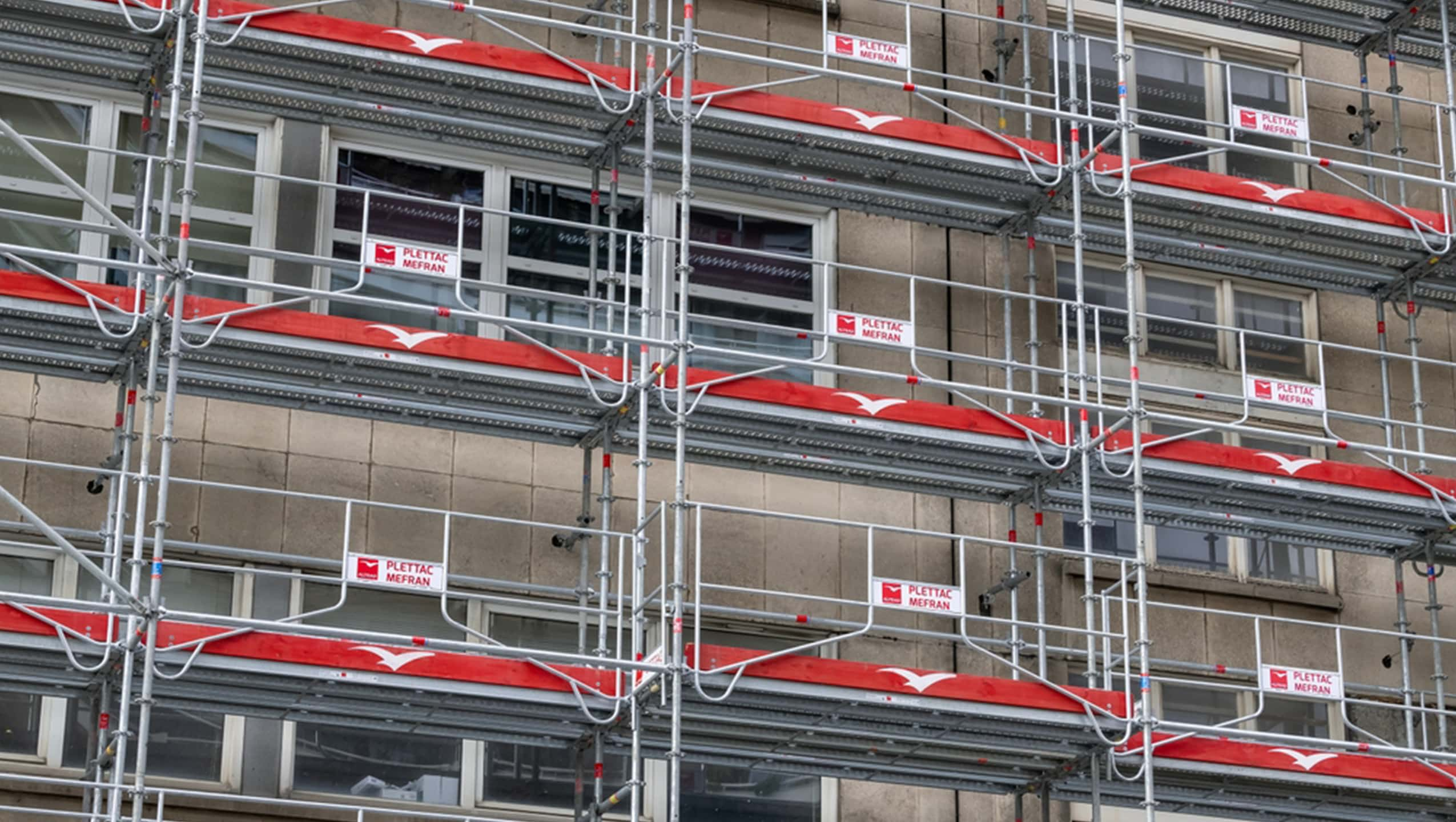
Photo By
Scaffolding is a crucial component in the construction industry, serving as a temporary support structure for workers and materials. Its presence is essential in ensuring the safety and smooth operation of construction, maintenance, or repair processes. This article will explore what scaffolding is, its functions, the types commonly used, and some examples of its application in various projects.
What is Scaffolding?
Scaffolding is a temporary structure designed to provide support for workers and materials during the construction process. In Indonesia, it is also known as "panggung kerja" (work platform). This tool allows workers to safely and efficiently reach high or hard-to-access areas. Made from various materials such as steel, bamboo, or wood, scaffolding forms a sturdy framework that creates a stable work platform.
Scaffolding is essential for installation, maintenance, or building renovations. With scaffolding, workers can perform tasks at height more easily and safely, reducing the risk of injuries due to falls or inadequate access. This structure supports workers and helps organize the materials needed throughout the project.
Main Functions of Scaffolding
This structure provides better access for work at height, enhances work efficiency, and supports worker safety. Below are some of the main functions of scaffolding, making it an essential tool in every construction project.
1. Enhancing Worker Safety
Scaffolding provides a stable and safe working area for workers performing tasks at height. With this platform, workers have a secure footing and easy access to elevated locations, minimizing the risk of falls. Scaffolding is also equipped with safety rails to enhance safety further.
2. Facilitating Access to Elevated Locations
Workers often need to reach high points such as exterior walls, roofs, or interior areas in building construction or maintenance. Scaffolding allows workers to quickly and easily perform tasks such as painting, installation, or repairs without difficulty.
3. Increasing Work Efficiency
Scaffolding enables workers to access work areas more quickly and safely, which in turn helps accelerate the project completion process. With a well-designed structure, work efficiency increases, and the time required to complete tasks can be significantly reduced.
4. Supporting Stability and Material Logistics
In addition to serving as a platform for workers, scaffolding provides temporary support for installing materials, such as in wall construction or building frameworks. Furthermore, scaffolding makes transporting construction materials and equipment easier to hard-to-reach areas, ensuring smooth logistics in the construction project.
Types of Scaffolding
Understanding the different types of scaffolding is essential to ensure that a project is carried out safely and efficiently. Below are some common types of scaffolding used in the construction industry.
1. Frame Scaffolding
This is the most widely used type of scaffolding, made from sturdy steel or iron frames. Known for its ease of assembly and disassembly, frame scaffolding is commonly used in multi-story building projects. Available in various sizes, it provides high stability, making it an ideal choice for large projects requiring height access.
2. Suspended Scaffolding
Designed to hang from a building's roof, suspended scaffolding is typically used for painting or maintenance work on the exterior of tall buildings. With a platform that can be raised or lowered, this scaffolding allows workers to easily and safely reach elevated sections of a building.
3. Cantilever Scaffolding
This type is installed using poles or beams attached to the building. It is often used in areas where ground installation of scaffolding is not possible. Cantilever scaffolding is ideal for situations where space beneath the structure is obstructed, offering a solution for projects requiring height access without using support poles on the ground.
4. Trestle Scaffolding
Trestle scaffolding, which has a design similar to a table, is typically used indoors. This type is easy to move and is perfect for small projects like wall painting or interior decoration installation. Its limited height makes it ideal for work that doesn't require extreme access.
5. Steel Scaffolding
This scaffolding is made from steel and offers higher strength and durability than other types. Steel scaffolding is suitable for projects that require resistance to heavy loads and harsh weather conditions. Its reliability makes it a preferred choice for many large-scale construction projects.
Proper Scaffolding Installation Process
Expertise and a thorough understanding of the installation steps are crucial, especially for those new to the field. Below are key steps in the scaffolding installation process that must be followed to ensure it functions well and safely.
1. Planning and Site Preparation
Before beginning installation, choosing the right location that is free of obstructions is important. Check the ground condition, as uneven surfaces can increase the risk of scaffolding collapse. A proper site serves as the foundation for the entire structure.
2. Base and Frame Installation
The next step is to install the base of the scaffolding securely. A strong base will be the primary support for the entire structure. Once the base is properly installed, assemble the scaffolding frame. Ensure that all connections are locked correctly to prevent unwanted movement.
3. Platform and Height Adjustment
Once the frame is in place, carefully position the platform or workboards. The platform must be stable to allow workers to move safely. If the scaffolding is built vertically, use tools like jacks or U-heads to adjust the height according to the required specifications.
4. Inspection and Maintenance for Safety
Before using the scaffolding, conduct a thorough inspection to ensure there are no loose or damaged components. Routine maintenance during use is also critical, especially for long-term projects. Ensuring all parts of the scaffolding are in good condition is crucial to maintaining safety on-site.
As an essential tool in construction, scaffolding allows workers to perform tasks at height more safely and efficiently. With an understanding of the various types and installation methods, choosing the right scaffolding for a project becomes easier. Always pay attention to safety and stability factors to ensure smooth project execution. With the right scaffolding, all construction work will be more secure, creating a safe and productive environment.
Popular Collections








